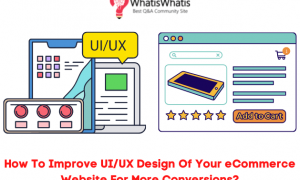A good user experience is a crucial factor for triggering emotions, which affects the enthusiasm of site visitors and maintains that mood when navigating through the site content.
User experience refers to how site visitors see the site, which pages they visit, where they click the most, which pages they leave quickly, and so on. The user interface should not be mixed with the user experience. There is a difference between the user interface and user experience. User interface refers to the look and quality of the site itself, and user experience refers to what can be seen and read on the site.
When designing an affiliate site, you need to think specifically about how you will attract users (visitors) to click on affiliate links and design based on that. Through design, you should also think about the target audience, i.e., who the product or service is intended for and plan for them, an example for that is askgamblers.com site. Today, more and more visitors are coming to the sites using their mobile phones. And so maybe you should start with a design for mobile platforms and then go back to desktop access.
When creating a site, you may find it tempting to display ads on your site, though think carefully about it. People don’t like everything to be overcrowded with ads. So if you can manage without ads on your site, then it is better to do so. It is better to put extra effort into your SEO to lead visitors to click on affiliate links.
The significant thing is also to put affiliate links on the front page, and it is vital to have a hyperlink in your text. Because putting these links in more places gives more chances for the user to click on the affiliate link. Make sure your website has a maximum of one pop-up when entering and one when leaving the site. Because too many pop-ups can cause a counter effect.
Know more: Do Breadcrumbs Have Any Impact on eCommerce SEO?
Tips for improving user experience
Use landing page design as a good user experience
Landing page design should arouse curiosity and the need for further engagement of site visitors. Curiosity is the first response to a new and good user experience that drives visitors to further discoveries. Landing page design is significant for a positive association on the first contact with the site.
Designing details
Micro-interactions are small details, undemanding and straightforward things that affect a good user experience.
Micro-interactions consist of four steps:
1. trigger – initiates actions when activated
2. rules – regulate events and their order when the user uses them
3. feedback – give the user confirmation of the result of his action
4. duration – the detail lasts, happens, and ends after the action.
Three examples of micro-interactions
1. tabs in the cursor touch menu become underlined or change color and the like.
2. when scrolling down, there is a button in the lower right corner that leads to the top.
3. when you read an article, the right sidebar shows how much you have read, etc.
Consider the automatic slider at the top
It is recommended that you do not use an automatic slider. Use background images or color and quality typography instead.
In that manner the visitor can read the printed segment and click for action or further. It’s a great way to attract and direct attention and you give the user control over navigation and freedom of choice.
Improve the display of content
There is a growing need to display the content of the website in the most exciting way possible. Modern SEO site optimization strives to attract users in various forms strongly. Apply graphics to content (charts, tables, buttons, lists, etc.).
This is done because it takes a lot more time for the brain to process textual content than for graphic representations that are concise and clearer due to better visual perception.
Show everything you want, but shorten the content
Offer users a link above the content or to the content itself to link to other websites for additional information. This is good for content optimization for Google because it especially appreciates and tracks those links. Use the option to display the content in a smaller space (infographic, table, graph, drawing, statistics).
Know more: Five SEO Tools You Need to Start Using
Let accessibility come first when designing. Make it simple and make it easier for users to access. Limit the text on your page, get rid of the text where it is unnecessary, use short paragraphs, enumerated lists, relevant tables, and pictures. Include a search box in the design of the page; if for some reason users can’t find what they need, they can use the search box. And, of course, the most important thing is testing. Track your users and see if they use the site and how long they stay on it. If you are constantly testing your site and improving it, it will make it more profitable.





Leave a comment